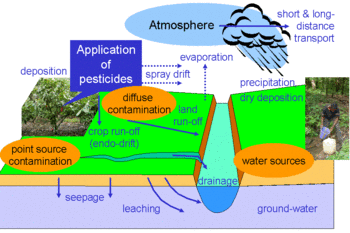What Does Eco Bed Bug Exterminators Dc Do?
What Does Eco Bed Bug Exterminators Dc Do?
Blog Article
The Only Guide to Eco Bed Bug Exterminators Dc
Table of ContentsEco Bed Bug Exterminators Dc Can Be Fun For AnyoneEco Bed Bug Exterminators Dc Things To Know Before You Get ThisSome Known Details About Eco Bed Bug Exterminators Dc Not known Details About Eco Bed Bug Exterminators Dc The Ultimate Guide To Eco Bed Bug Exterminators Dc
Because pesticides are poisonous, they are also possibly harmful to people, pets, other microorganisms, and the setting. Therefore, individuals that utilize chemicals or regularly come in contact with them should comprehend the loved one toxicity, possible wellness results, and preventative actions to minimize exposure to the products they utilize. Threat, or danger, of using chemicals is the capacity for injury, or the degree of threat associated with making use of a chemical under an offered collection of conditions.
Nonetheless, applicators can decrease or almost eliminate exposure-- and thus decrease risk-- by complying with the tag instructions, using personal safety clothes and equipment (PPE), and managing the chemical correctly. For example, even more than 95 percent of all pesticide direct exposures originate from facial direct exposure, largely to the hands and forearms. By using a set of unlined, chemical-resistant handwear covers, this kind of direct exposure can be almost gotten rid of.
The harmful effects that occur from a single exposure by any route of entry are called "intense effects." The four routes of direct exposure are facial (skin), breathing (lungs), dental (mouth), and the eyes. Intense poisoning is identified by examining the dermal poisoning, breathing poisoning, and oral poisoning of examination animals.
The 5-Minute Rule for Eco Bed Bug Exterminators Dc
Intense poisoning is gauged as the amount or concentration of a toxicant-- the a.i.-- needed to eliminate half of the animals in an examination populace. This measure is normally revealed as the LD50 (dangerous dose 50) or the LC50 (dangerous concentration 50). In addition, the LD50 and LC50 worths are based upon a solitary dose and are tape-recorded in milligrams of pesticide per kg of body weight (mg/kg) of the test pet or partially per million (ppm).
The reduced the LD50 or LC50 worth of a pesticide product, the greater its poisoning to human beings and pets. Pesticides with a high LD50 are the least harmful to human beings if utilized according to the directions on the product label. The chronic toxicity of a pesticide is established by subjecting test pets to long-term direct exposure to the energetic ingredient.
The persistent toxicity of a chemical is more difficult than intense toxicity to identify through laboratory evaluation. Products are classified on the basis of their relative severe poisoning (their LD50 or LC50 values). Pesticides that are classified as extremely harmful (Toxicity Group I) on the basis of either oral, facial, or inhalation toxicity need to have the signal words DANGER and POISON published in red with a skull and crossbones icon prominently displayed on the front panel of the plan tag.
The acute (solitary dosage) dental LD50 for chemical items in this group varies from a trace amount to 50 mg/kg. For example, direct exposure of a couple of drops of a material taken by mouth could be deadly to a 150-pound person. Some chemical products have simply the signal word threat, which tells you nothing concerning the acute poisoning, just that the item can create serious eye damages or serious skin irritation
Eco Bed Bug Exterminators Dc Fundamentals Explained
In this classification, the acute oral LD50 arrays from 50 to 500 mg/kg. A teaspoon to an ounce of this product could be fatal to a 150-pound person (bed bug heat treatment). Chemical items identified as either slightly hazardous or reasonably nontoxic (Poisoning Classifications III and IV) are needed to have the signal word CAUTION on the chemical tag

All pesticide toxicity worths, consisting of the LD50, can be located on the item's Product Safety Data Sheet (MSDS) - bed bug spray. Chemical tags and MSDS can be gotten from sellers or manufactures. Furthermore, the majority of items also know that can be found online. The signs and symptoms of pesticide poisoning can range from a mild skin irritability to coma or perhaps fatality.
Due to the fact that of prospective health concerns, chemical users and trainers have to acknowledge the usual indicators and signs of chemical poisoning. The effects, or symptoms, of chemical poisoning can be broadly defined as either topical or systemic.
Eco Bed Bug Exterminators Dc - Questions
Dermatitis, or swelling of the skin, is accepted as the most commonly reported topical result associated with pesticide direct exposure. Some people tend to cough, wheeze, or sneeze when subjected to pesticide sprays.
This symptom usually subsides within a couple of minutes after a person is removed from the exposure to the irritant. Nonetheless, a reaction about his to a chemical product that causes somebody not just to sneeze and cough but also to create extreme intense respiratory symptoms is more probable to be a real hypersensitivity or allergy.
Systemic results are rather different from topical effects. They commonly occur away from the original point of contact as a result of the chemical being soaked up right into and distributed throughout the body.
Report this page